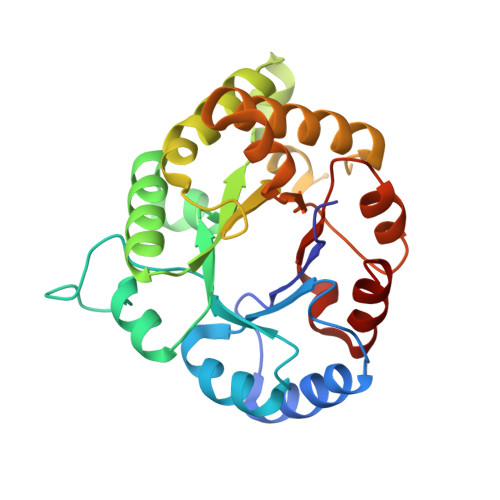Connecting Active-Site Loop Conformations and Catalysis in Triosephosphate Isomerase: Insights from a Rare Variation at Residue 96 in the Plasmodial Enzyme
Pareek, V., Samanta, M., Joshi, N.V., Balaram, H., Murthy, M.R.N., Balaram, P.(2016) Chembiochem 17: 620-629
- PubMed: 26762569
- DOI: https://doi.org/10.1002/cbic.201500532
- Primary Citation of Related Structures:
4X22, 4YMZ, 4YWI, 4YXG, 4Z0J, 4Z0S - PubMed Abstract:
Despite extensive research into triosephosphate isomerases (TIMs), there exists a gap in understanding of the remarkable conjunction between catalytic loop-6 (residues 166-176) movement and the conformational flip of Glu165 (catalytic base) upon substrate binding that primes the active site for efficient catalysis. The overwhelming occurrence of serine at position 96 (98% of the 6277 unique TIM sequences), spatially proximal to E165 and the loop-6 residues, raises questions about its role in catalysis. Notably, Plasmodium falciparum TIM has an extremely rare residue--phenylalanine--at this position whereas, curiously, the mutant F96S was catalytically defective. We have obtained insights into the influence of residue 96 on the loop-6 conformational flip and E165 positioning by combining kinetic and structural studies on the PfTIM F96 mutants F96Y, F96A, F96S/S73A, and F96S/L167V with sequence conservation analysis and comparative analysis of the available apo and holo structures of the enzyme from diverse organisms.
- Molecular Biophysics Unit, Indian Institute of Science, Bangalore, 560012, India.
Organizational Affiliation:


















